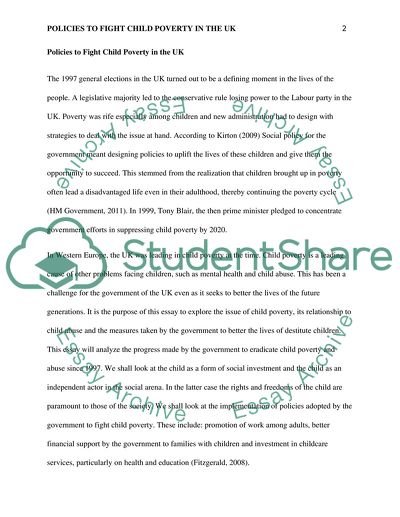Cite this document
(“Policies to Fight Child Poverty in the UK Research Paper”, n.d.)
Policies to Fight Child Poverty in the UK Research Paper. Retrieved from https://studentshare.org/politics/1777046-essay-title-in-his-beveridge-lecture-on-18th-march-1999-tony-blair-then-prime-minister-made-the-following-statement-we-need-to-break-the-cycle-of-disadvantage-so-that-children-born-into-poverty-are-not-condemned-to-social-exclusion-and-deprivation
Policies to Fight Child Poverty in the UK Research Paper. Retrieved from https://studentshare.org/politics/1777046-essay-title-in-his-beveridge-lecture-on-18th-march-1999-tony-blair-then-prime-minister-made-the-following-statement-we-need-to-break-the-cycle-of-disadvantage-so-that-children-born-into-poverty-are-not-condemned-to-social-exclusion-and-deprivation
(Policies to Fight Child Poverty in the UK Research Paper)
Policies to Fight Child Poverty in the UK Research Paper. https://studentshare.org/politics/1777046-essay-title-in-his-beveridge-lecture-on-18th-march-1999-tony-blair-then-prime-minister-made-the-following-statement-we-need-to-break-the-cycle-of-disadvantage-so-that-children-born-into-poverty-are-not-condemned-to-social-exclusion-and-deprivation.
Policies to Fight Child Poverty in the UK Research Paper. https://studentshare.org/politics/1777046-essay-title-in-his-beveridge-lecture-on-18th-march-1999-tony-blair-then-prime-minister-made-the-following-statement-we-need-to-break-the-cycle-of-disadvantage-so-that-children-born-into-poverty-are-not-condemned-to-social-exclusion-and-deprivation.
“Policies to Fight Child Poverty in the UK Research Paper”, n.d. https://studentshare.org/politics/1777046-essay-title-in-his-beveridge-lecture-on-18th-march-1999-tony-blair-then-prime-minister-made-the-following-statement-we-need-to-break-the-cycle-of-disadvantage-so-that-children-born-into-poverty-are-not-condemned-to-social-exclusion-and-deprivation.


